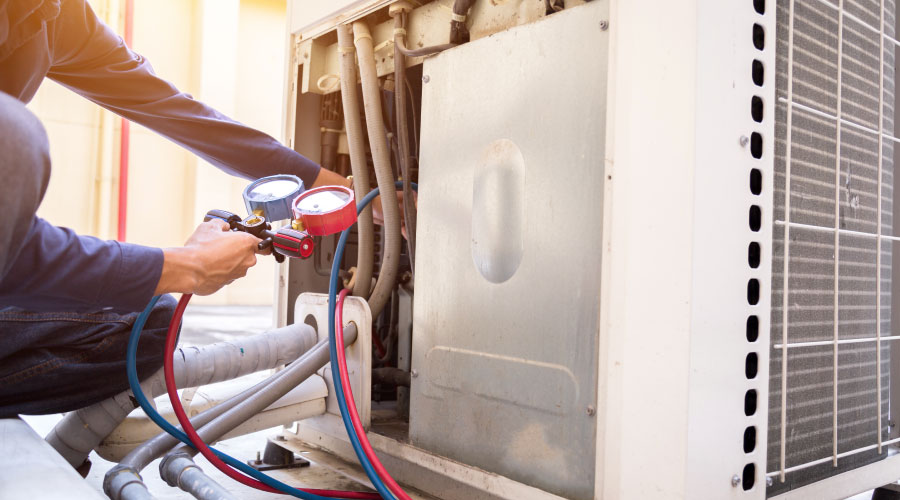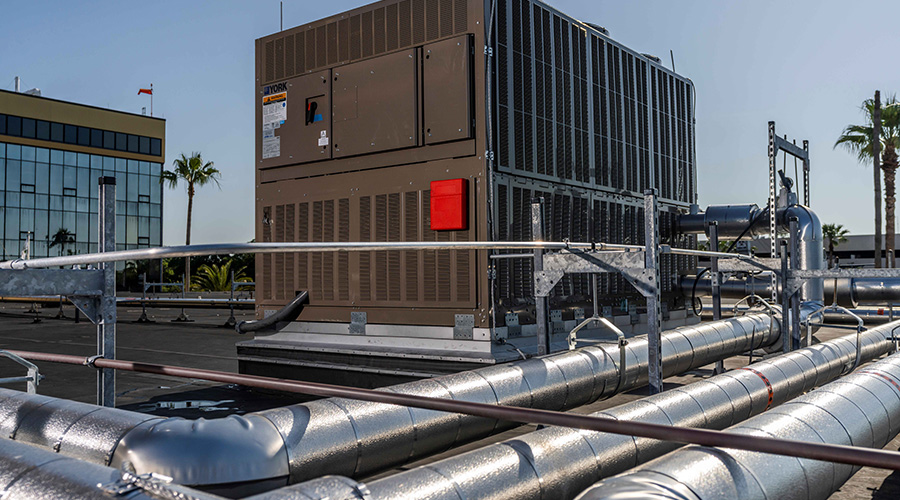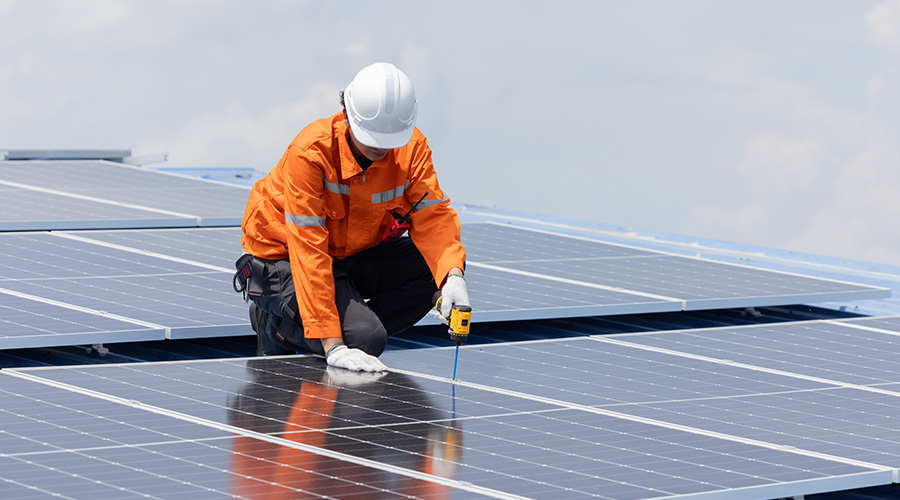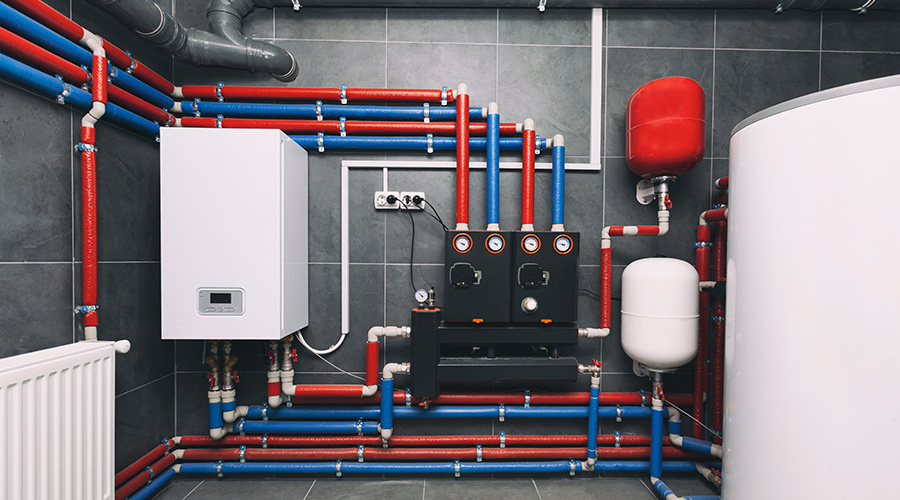From IAQ to Energy Efficiency: HVAC Upgrades Post-Pandemic
Managers need to make sure HVAC systems today and in the immediate future can handle a crisis such as COVID-19.
Many managers revisited and upgraded their HVAC operations to meet the evolving challenges presented by the pandemic while keeping in mind the impact of the changes on energy efficiency. Among the tactics:
- Air handlers were adjusted to increase outside air to handle the increased cooling and heating capacity.
- Managers found many units had to stay at minimum outside air set points due to limitations.
- Some air handlers were set up with pre- and post-flushing.
- Managers adjusted space utilization and changed operational parameters in some cases.
- Managers installed new technologies, such as ultraviolet lights.
- Managers changed filter types due to rating and effectiveness, keeping in mind that even a tiny filter gap can dramatically affect filter performance.
Other updates to HVAC building operations also are having long-term impacts on a facility’s energy use:
- The changes throughout the sites increased building exhaust fan and central utility plant energy use.
- Some organizations used two hours pre- and post-purge for occupancy.
- The increased MERV level ratings for air handling units (AHU) filtration caused higher fan power.
- Increase in space utilization often led to lower exposure to airborne illness.
- Managers used portable room air cleaners with HEPA filters and ultraviolet germicidal irradiation in specific building locations. It was a small increase in energy use and had a higher maintenance impact.
- Clean ductwork and coils using an enzyme foam process if possible.
- Ensure outside air volumes match the newer codes if possible.
Beyond IAQ
Managers also made changes to facilities that went beyond HVAC operations in an effort to create healthier indoor environments. Among the many changes were these:
- enforced and trained for proper use of personal protection equipment
- provided hand sanitizing stations
- increased cleaning frequencies
- increased the use of sanitizing cleaning products
- adopted entry policies with health checks, thermal testing and spacing of personnel
- reduced high-touch surfaces by installing advanced technology, such as: touchless motion sensors; wave technology; voice and facial recognition; personal phone apps; Internet of Things (IoT) technology; and workplace experience platforms
- reduced occupancy levels with staggered schedules and limits on space accommodations
- adjusted seating density
- altered traffic flow patterns within buildings
- used robotic cleaning processes
- rightsized buildings by consolidating activities to control costs
- decommissioned or recommissioned space if necessary.
What lies ahead
As a result of the many changes and updates made to facilities at various times over the last three years, managers now have a range of proven options for improving and streamlining HVAC operations to maximize the health of indoor environments:
Retrocommission building systems to make sure they operate a peak design performance. Evaluate replacing or upgrading central HVAC systems and add functions such as UV and higher filtration systems — MERV 13 and above. Improve seals on the filtration system to minimize air bypass. Add enhanced operational control sequences.
Provide and maintain the minimum outdoor airflow rates for ventilation as specified by applicable codes and standards. Use combinations of filters and air cleaners that achieve MERV 13 or better levels of performance for air recirculated by HVAC systems. Use air cleaners. Use select control options, including standalone filters and air cleaners, which provide desired exposure reduction while minimizing associated energy use.
Maintain temperature and humidity design set points. Maintain an equivalent clean air supply required for design occupancy whenever occupants are in the space served by the building HVAC system. Operate systems for the time required to achieve three air changes of equivalent clean air supply when necessary to flush a space between specific occupancy periods.
Increase minimum outside air -- fresh air exchanges -- by using heat recovery systems to reduce possible energy use with building operational changes. Review each filter to minimize the fan energy requirements and operational costs. Look at capacity requirements from cooling and heating systems to make sure they can handle immediate future requirements while at the same time adding redundancy.
Consider adding dehumidification units in large open spaces in order to maximize performance and efficiency while meeting changing environmental conditions. Develop a standard for operational requirements and spaces to ensure systems provide the most effective space allocation. Keep messaging the staff and visitors with operational procedures and implementation plans. Review operations, policies and procedures related to maintenance, housekeeping and building operations to ensure departments provide environments that meet or exceed current standards.
Through effective operational process improvement and modernization, managers need to make sure HVAC systems today and in the immediate future can handle a crisis such as COVID-19. Embracing this process will make it much easier to confront similar challenges in the future, and building occupants are likely to feel safer working in healthier indoor environments.
Michael Heroux, CEM, CPMM, CBCP, CEA, is an energy engineer with FST Technical Services.
Related Topics:













